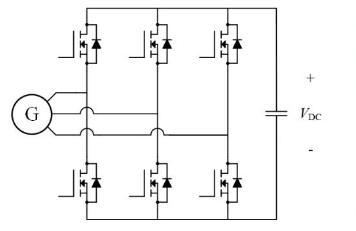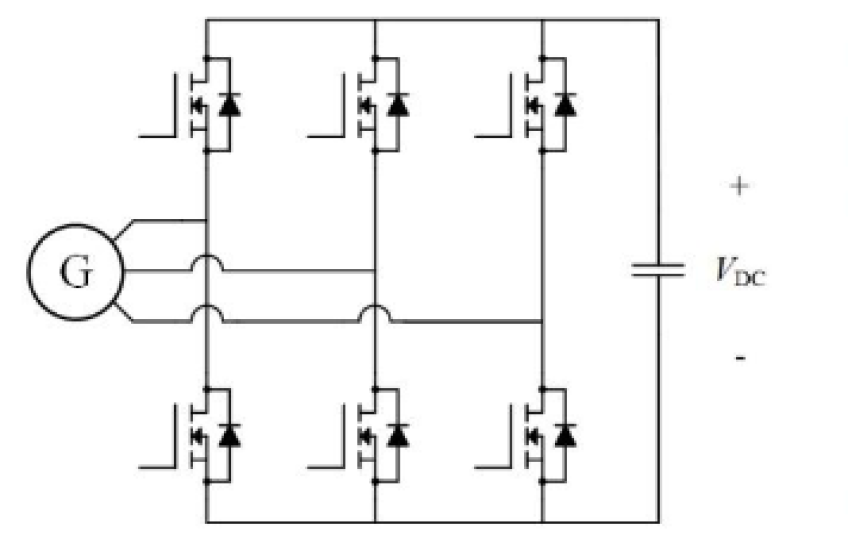Oxford, Ohio–Miami University is leading the development of the “High Reliability, Low EMI, Wide Bandgap Power Conversion for Air & Space Applications” project funded by the Ohio Federal Research Network (OFRN). Research for this project aims to develop modern power supplies for aviation applications.
Aircraft are becoming increasingly more electrified where modern power systems are challenged by the dynamic behavior of the electrical components. Researchers at Miami University are working with the Air Force Research Laboratory (AFRL) to develop hardware that can meet those needs.
“One of the things that we're doing differently in this project is how we implement the power electronics and power devices,” said Dr. Mark Scott, associate professor, Electrical and Computer Engineering, Miami University, Power Electronics Laboratory.
The goal of the project is to develop a 100-kilowatt, active rectifier based on soft-switching technology to showcase the strengths of silicon carbide (SiC) power devices. The team is utilizing soft-switching technology to harness the strengths of SiC power devices while bypassing some of the secondary effects that make these modules difficult to use.
“I liken this to the automobile world,” said Dr. Scott. “The power electronics community historically uses silicon power devices, which is like using a generic automobile to commute to work. Imagine someone was given a Formula 1 racer for their commute. It would require a completely different mindset to drive this vehicle. Wide bandgap devices are like this for engineers. That's what our research is analyzing. We have new devices with unique capabilities that make them more effective, but we must learn how to use those devices to harness their capabilities.”
As of now, the project researchers have developed one power stage and a new transformer technology. The goal is to start demonstrating these developments in a single-phase rectifier and then in a three-phase active rectifier.
“We've got the power supply demonstrated,” said Dr. Scott. “Now, we need to increase the power and demonstrate it in a different mode of operation.”
The project supported one undergraduate student and one combined Bachelor of Science / Master of Science student from Miami University as well as two PhD students from The Ohio State University. The Ohio State students worked with Max Power Solutions to create a printed circuit (PCB) for the control signals. They also produced a simulation model and created documentation for testing. The Miami University students soldered and debugged the PCBs created by both Miami University and Ohio State, assembled the initial prototype system, created test fixtures, and supported the converter testing. Miami’s students also worked with Power Converters Future to design the mechanical system, created assembly drawings, and worked with Ohio State’s and P.C. Krause & Associates’ staff to have the components fabricated.
In addition to facilitating the funding for the project, OFRN program managers are helping Miami University by identifying funding opportunities and guiding them through their commercialization efforts, such as connecting the universities with an Ohio-based small business to partner with and together apply for federally mandated nondilutive funding.
###
About Parallax Advanced Research
Parallax Advanced Research is a 501(c)(3) private nonprofit research institute that tackles global challenges through strategic partnerships with government, industry, and academia. It accelerates innovation, addresses critical global issues, and develops groundbreaking ideas with its partners. With offices in Ohio and Virginia, Parallax aims to deliver new solutions and speed them to market. In 2023, Parallax and the Ohio Aerospace Institute formed a collaborative affiliation to drive innovation and technological advancements in Ohio and for the Nation. OAI plays a pivotal role in advancing the aerospace industry in Ohio and the nation by fostering collaborations between universities, aerospace industries, and government organizations, and managing aerospace research, education, and workforce development projects. More information about both organizations can be found at the Parallax and OAI websites.
About the Ohio Federal Research Network
The OFRN has the mission to stimulate Ohio’s innovation economy by building statewide university-industry research collaborations that meet the requirements of Ohio’s federal laboratories, resulting in the creation of technologies that drive job growth for the State of Ohio. The OFRN is a program managed by Parallax Advanced Research in collaboration with the Ohio State University and is funded by the Ohio Department of Higher Education.






